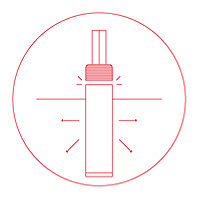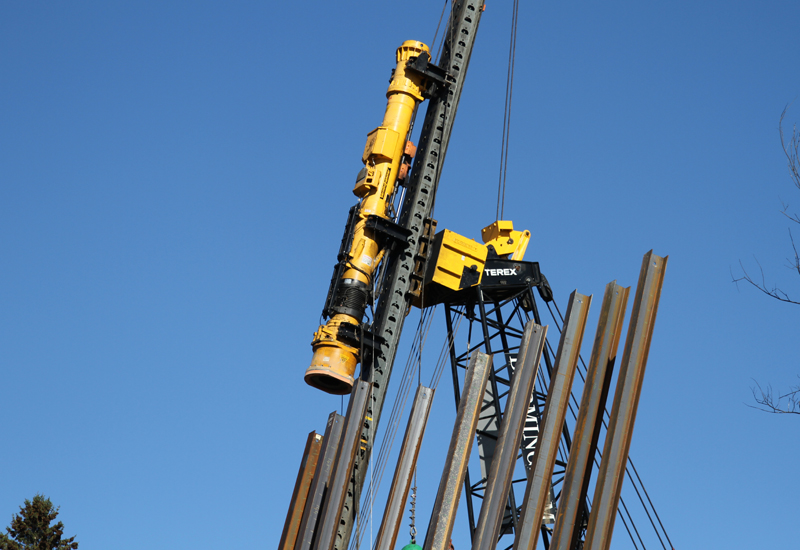Driven Piles

Driven piles are among the most common, versatile and cost-effective deep foundation solutions available. Piles are long, slender foundation elements made from natural or manufactured materials – typically steel, timber or precast concrete. Purpose-built heavy equipment, designed and manufactured by Berminghammer, is used to drive piles to their design depth by impact hammering, vibrating, or pushing into the earth. In areas of dense underlying soils, pre-drilling can be done to assist the pile-driving process.
Advantages

- Driven piles are suitable for a wide range of subsurface conditions, including thick layers of soft soil or high water tables which present challenges to alternative solutions.
- When warranted, coatings can be applied to piles to mitigate corrosion or negative skin friction.
- Driven piles are installed directly into the ground, so they typically do not require any soil removal therefore do not require costly hauling or disposal of excess or contaminated materials.
- Driven pile installation is also quicker than alternative techniques as it does not require any curing time before moving on to the next stage of construction.
- Driven pile capacity can be verified in the field with static or dynamic testing.
- Driving equipment is fitted with instruments that allow engineers to accurately calculate pile capacity as a function of the input forces, i.e. the mass and velocity of the hammer, and the resulting penetration resistance expressed in blow counts per unit-length of the pile.
- Driven piles typically experience a phenomenon referred to as “set-up” which results in the pile developing additional capacity after installation. This time-dependent capacity increase can be estimated during foundation design considering the unique properties of the piles and soils in question.
Applications
Driven piles are commonly used in a wide range of applications in the commercial, industrial, infrastructure, and marine sectors. Typically used for permanent deep foundations under buildings, tanks, bridges and other structures, driven piles can also be used for pile-supported embankments, noise barrier walls, retaining walls, mooring structures and cofferdams. Driven piles can also be installed temporarily during construction to support and protect existing features such as slopes, structures or watercourses.

